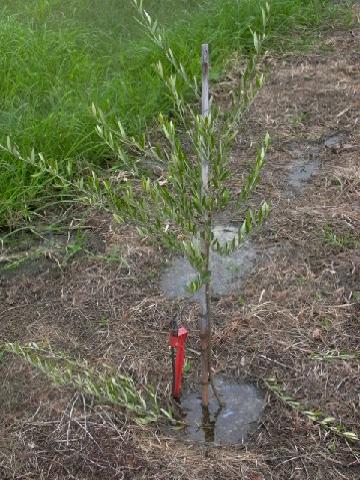Pests & Diseases » Waterlogging

Olive trees need both water and oxygen in the soil around the roots for growth and survival. Poorly drained soils will limit oxygen availability and lead to rapid plant decline. It is therefore essential that soil texture and drainage are checked prior to planting.
Sandy and loam type soils are porous and are usually well drained. Clay soils, on the other hand, have much smaller pores and retain water for long periods of time. Although the water-holding capacity of clay soils can be beneficial in drier climates it can lead to serious problems if they are over irrigated or rainfall is too high.
To test your planting location for soil drainage you will need to dig a hole about 40cm deep. Fill the hole with water and let it stand overnight. If the water has not drained by morning it is a good indication that the soil drainage is not adequate.
If the test indicates poor soil drainage or the area is subject to high rainfall that leads to periods of intermittent waterlogging, it is best to plant the trees on a raised bed or mound. Even small periods of waterlogging or "wet feet" can predispose trees to root rot and other disorders that affects tree growth and survival.
Mounds or raised beds can be made by either adding good sandy-loam landscape soil to site or by removing the top soil from the inter-row and using it mound up the planting row. The mound should be at least 45-80cm high and 90cm in diameter.
Incorporating gypsum (¼ of a bucket) into the soil can help break up the clay and improve drainage but if the soil still drains poorly a couple of weeks after adding gypsum then it is best to plant on a mound. Adding gravel or crusher dust to the planting hole will not improve drainage.
In some groves installing a surface and/or subsurface drainage system may be a viable option to improve the drainage of the grove site prior to planting. Surface drainage involves contouring the surface of the ground or installing a spoon drain to create an artificial “creek” to direct water away from wet areas. Subsurface drainage using slotted ag pipe and gravel trenches requires an understanding of soil types and soil water movement and is best engineered by a drainage professional.
If you find that after planting, a tree site is prone to waterlogging (like the photo above) it is best to carefully dig out tree, build up the soil and replant on the mound.









